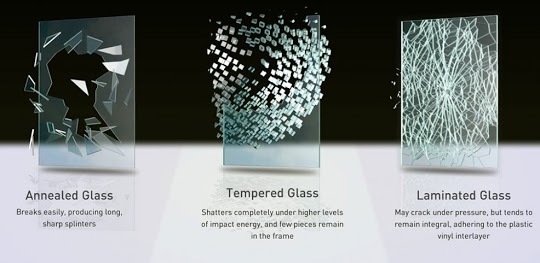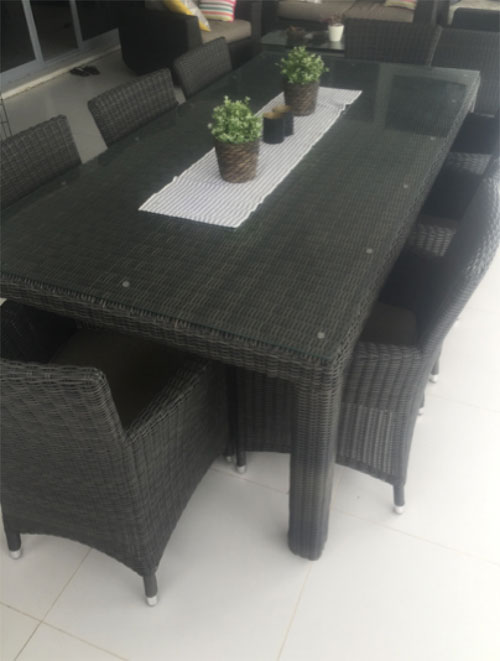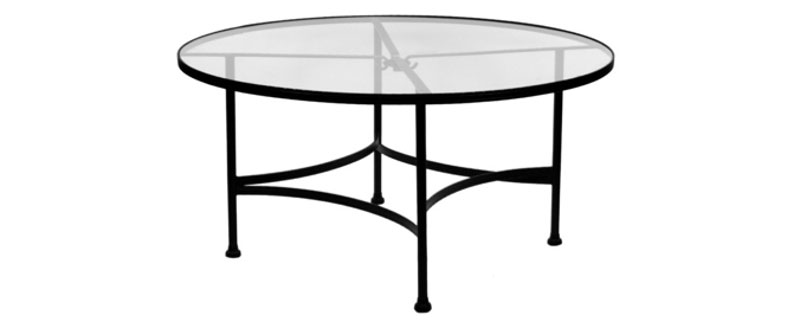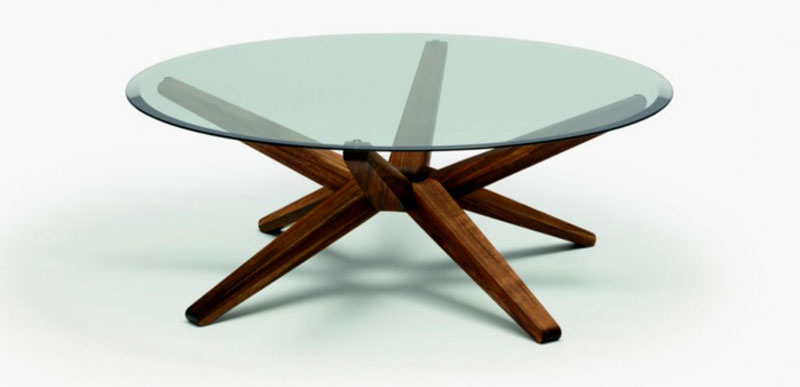
There are generally three common types of glass around your home or commercial property.
Every home is different and depending on the area and location you are wanting to install the glass determines what glass type would be best for you.
The difference in the glass is not just the thickness but also the safety aspect.
Float Glass/annealed (image on left) is the minimum standard for glass in the home. You will find it mostly in your bedroom and lounge room windows and is generally 4mm thick. When broken it can be quiet dangerous as it breaks into large sharp pieces.
Toughened Glass (Middle Image) is suited to areas of the home most prone to injury from human impact such as bathrooms, splash backs, doors and full length windows. When broken it will generally shatter into tiny little pieces which will reduce injury.
Laminated Glass (Image on right) is referred to as a Grade A Safety Glass.
It consists of two or more sheets of glass permanently bonded together with an inter layer designed to improve acoustics and/or impact resistance.
The inter layer reduces the risk of the glass breaking and forming long, dangerous shards.
To learn more the other types of glass you can have installed go to:
Windows bring natural light and fresh air into our homes as well as offering views that connect the inside to the outdoors.
However, window-related accidents and security can be a major source of concern.
Especially for small children which means that putting safety glass in your home can be very important.
Fortunately, there are a number of preventative measures you can take to improve the safety risks of your home.
By arming yourself with the right knowledge, you can have greater peace of mind for the safety of you and your family.
Safety glass areas of a home that are prone to accidents are required to be fitted with what’s known as Grade A safety glass.
The use of safety glass reduces the risk of injury as it is tougher to break and won’t fracture into dangerous shards if broken.
In recent years the areas of your home where safety glass is required has increased, while the allowances for ordinary glass areas has decreased.
Putting safety glass in your home – areas where it should be installed
As a general guide you must use safety glass in:
- all glass doors
- bathrooms (for all areas up to 2 metres high)
- door side panels (if less than 300mm away from the door and positioned 1.2 meters or less above the floor)
- around stairs (for a distance of 1 meter from either side of the stairs and 2 meters from the bottom of the stairs)
- areas that can be mistaken for openings (e.g. full height glass)
- low level glass (if larger than 1.2 metres – areas under 1.2 metres require a minimum of 5mm thick glass
- throughout your home if you are running a childcare business.
While these are the minimum areas that require safety glass you may want to consider using it in additional spaces, especially where children are active.
There are two types of safety glass available – toughened glass and laminated glass.
Alternatively, glass safety film can be applied to existing windows and glass areas.
While laminated glass, toughened glass and window film can all be used to meet Australian building regulations
It is worth selecting the most appropriate one to meet your needs
If you would like to read more information regarding the differences between toughened and laminated glass, click on the link below:
https://www.trueblueglass.com.au/learn-about-glass/
 What glass is best for my table?
What glass is best for my table?
Glass table tops are usually a hot topic so we will address some of the usual questions we receive here.
Firstly, there are no strict rules on what you can and can’t have with regards to glass on table tops.
Table tops are furniture and therefore do not fall under the glass and glazing code.
However, common sense must prevail.
When is annealed glass ok?
Table tops with a flat surface for the glass to sit on like the one featured, with little to no overhang of glass would be best suited to the option of annealed glass.
Whilst annealed glass is weaker than toughened glass, the surface is actually more durable to cups, plates & cutlery etc. and if it were to break in this situation, the glass would not fall to the floor (and onto people’s feet).
For a table of this size (2000 x 1000) 6mm thickness is a good fit.
If it’s considerably smaller you may want to go down to 5mm, or possibly even 4mm.
When should safety glass be used?
Toughened glass on a table top like this one is not required and is actually more susceptible to scratches and marks, as the surface is softer.
In a situation like the one pictured below where the glass could break and fall to the floor it is recommended to use a safety glass.
Either toughened or laminated will suffice.

Is there a time I should not use laminated glass?
Keep in mind if using laminated glass that if the table top is exposed to the elements, eventually water will get in between the two sheets of glass and you’ll get what is called ‘lam rot’ with the water slowing creeping into the inter layer.
If the table is undercover, you don’t need to worry about this.
Because this one has a frame around it, again, 6mm would be fine up to a diameter of 1000mm. However the table top below is another matter again.

This one has no frame so it would require a heavier glass.
With a diameter of about 1000mm or more, 10mm to 12mm glass should be used as a minimum.
These are just a few examples and should be used as a guide.
Feel free to call us to discuss your options on table tops. Remember to send us photos if possible.
To read more about our services please click here




